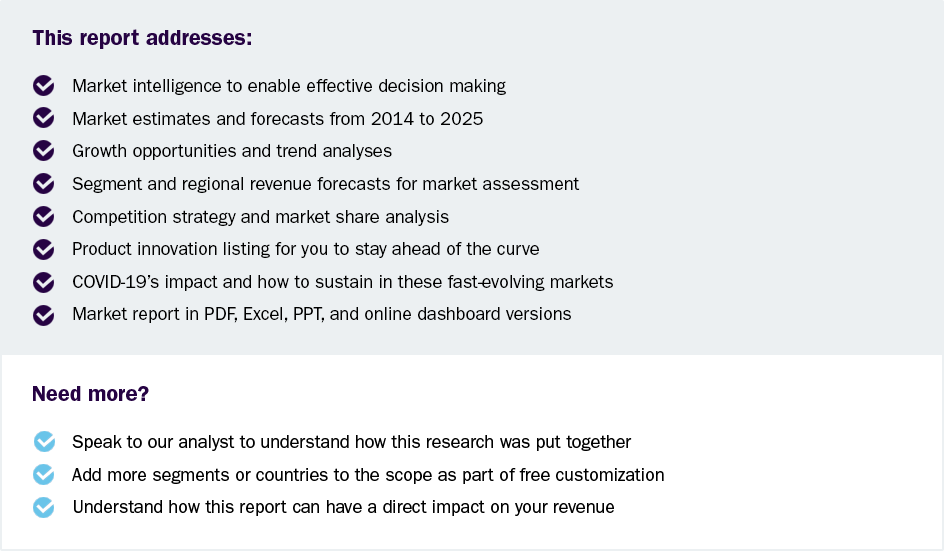Pharmaceutical Robots Market To Reach $458.36 Million By 2033
Pharmaceutical Robots Market Growth & Trends
The global pharmaceutical robots market size is estimated to reach USD 458.36 million by 2033, registering a CAGR of 8.73% from 2025 to 2033, according to a new report by Grand View Research, Inc. Growth can be attributed to the surge in government initiatives and increase in healthcare spending on technological advancements. For instance, Japan’s Robot Strategy aims to establish the country as the premier hub for robot innovation globally. In 2022, the Japanese government provided over USD 930.5 million in support. This funding was distributed across various key sectors, such as manufacturing, nursing & medical, infrastructure, and agriculture.
Moreover, governments worldwide recognize these technological solutions have transformative potential in addressing healthcare challenges and improving patient outcomes. Hence, the rise in the number of government initiatives and healthcare spending is expected to propel the development and deployment of healthcare mobile robots. Furthermore, pharmaceutical companies prioritize more than just innovation to boost their patent portfolios. Some of the leading pharmaceutical companies are strategically investing in robotics to secure lucrative partnerships and position themselves at the forefront of industry advancements.
The need for automation in manufacturing facilities and the high costs of discovering new drugs are the other factors predicted to improve the demand for robotics in drug discovery, clinical trials, & laboratories. Hence, key companies have introduced technologically advanced robotic machines, propelling market growth. In addition, automation and robotics have gained immense popularity in the pharmaceutical industry due to the growing demand for precision, output, & faster turnaround times.
With the growing competition in the pharmaceutical industry, drug manufacturers are revolutionizing manufacturing processes with robotic technology. This technology has increased manufacturing efficiency and a growing ability to offer quality products at lower costs. These factors are expected to fuel the demand for pharmaceutical robots for manufacturing processes in the coming decade. Furthermore, key players are undertaking various strategies, such as mergers & acquisitions and collaborative agreements, facilitating market growth. For instance, in July 2023, ABB launched two new variants of its GoFa collaborative robot: The GoFa 10 and GoFa 12. These additions would provide companies with enhanced opportunities to utilize cobot automation, boosting efficiency.
 Request a free sample copy or view report summary: Pharmaceutical Robots Market Report
Request a free sample copy or view report summary: Pharmaceutical Robots Market Report
Pharmaceutical Robots Market Report Highlights
-
By product, the traditional robots segment dominated the market with the largest share in 2024. Traditional robots can help pharmaceutical companies streamline various processes, such as unloading, packaging, palletizing, & depalletizing, while adhering to strict regulatory standards and guidelines, ensuring that their products meet the necessary quality and safety requirements.
-
By application, the picking and packaging segment dominated the market and accounted for the largest share of 55.01% in 2024 and is expected to grow at fastest CAGR over the forecast period.
-
By end use, the pharmaceutical companies segment accounted for the largest market share of 67.81% in 2024 and is anticipated to grow at fastest CAGR over the forecast period.
-
North America dominated the pharmaceutical robots market with a revenue share of 66.57% in 2024, owing to the well-established healthcare infrastructure contributing to the increasing demand for collaborative robots in the pharmaceutical industry.
Pharmaceutical Robots Market Segmentation
Grand View Research, Inc. has segmented the global pharmaceutical robots market based on product, application, end-use, and region:
Pharmaceutical Robots Product Outlook (Revenue, USD Million, 2021 - 2033)
-
Traditional Robots
-
Articulated Robots
-
SCARA Robots
-
Delta/Parallel Robots
-
Cartesian Robots
-
Dual-arm Robots
-
-
Collaborative Pharmaceutical Robots
Pharmaceutical Robots Application Outlook (Revenue, USD Million, 2021 - 2033)
-
Picking and Packaging
-
Inspection of Pharmaceutical Drugs
-
Laboratory Applications
Pharmaceutical Robots End-use Outlook (Revenue, USD Million, 2021 - 2033)
-
Pharmaceutical Companies
-
Research Laboratories
Pharmaceutical Robots Regional Outlook (Revenue, USD Million, 2021 - 2033)
-
North America
-
U.S.
-
Canada
-
Mexico
-
-
Europe
-
Germany
-
UK
-
Italy
-
Spain
-
France
-
Sweden
-
Denmark
-
Norway
-
-
Asia Pacific
-
China
-
India
-
Japan
-
Thailand
-
South Korea
-
Australia
-
-
Latin America
-
Brazil
-
Argentina
-
-
MEA
-
South Africa
-
Saudi Arabia
-
UAE
-
Kuwait
-
List of Key Players in the Pharmaceutical Robots Market
-
ABB Ltd.
-
Universal Robots A/S
-
Kawasaki Heavy Industries Ltd.
-
Yaskawa Electric Corporation
-
FANUC America Corporation
-
Marchesini Group S.p.A
-
Seiko Epson Corporation
-
Denso Wave, Inc.
-
Shibuya Corporation
-
Mitsubishi Electric Corporation
-
Kuka AG

